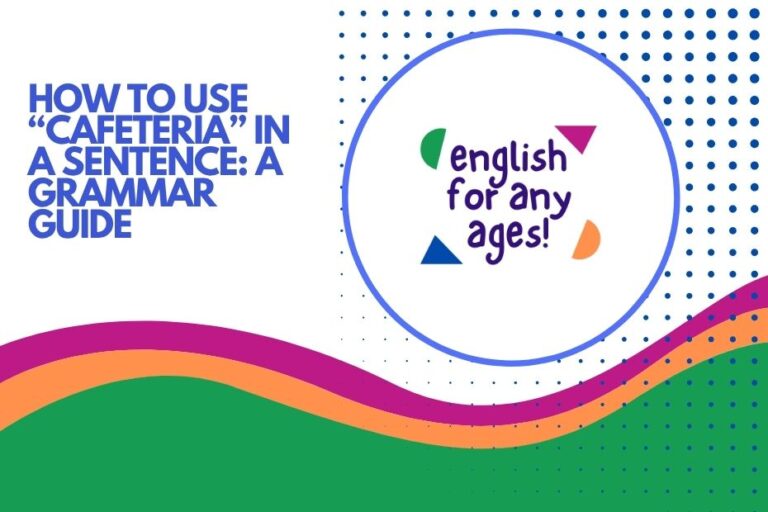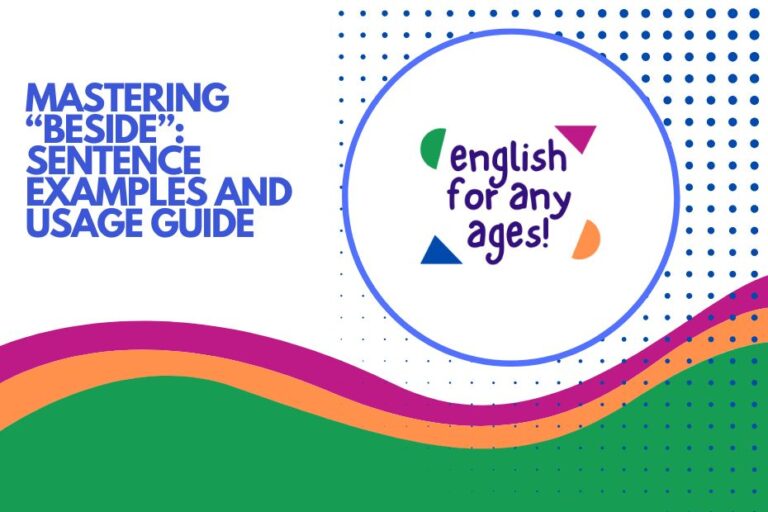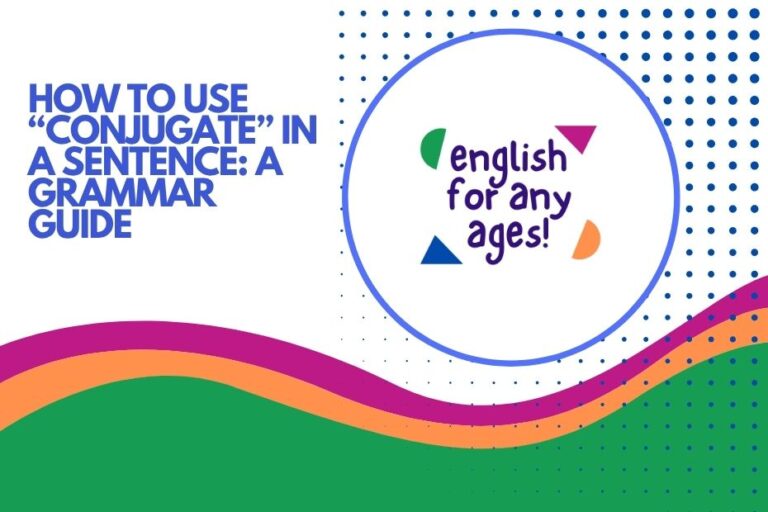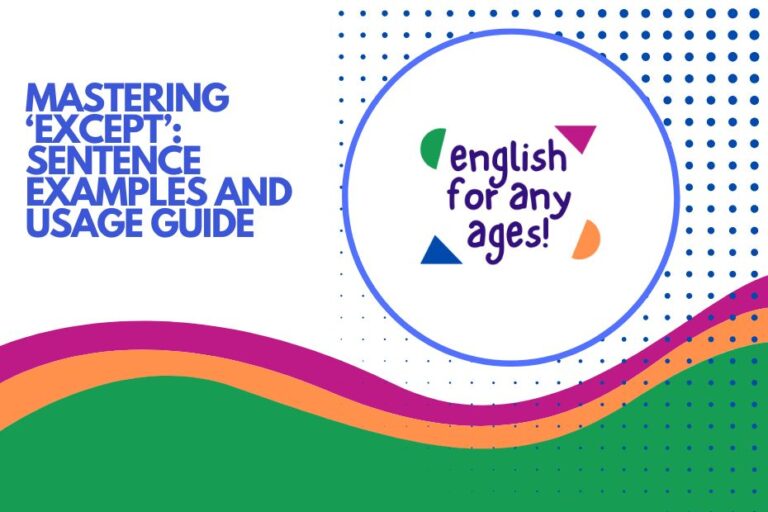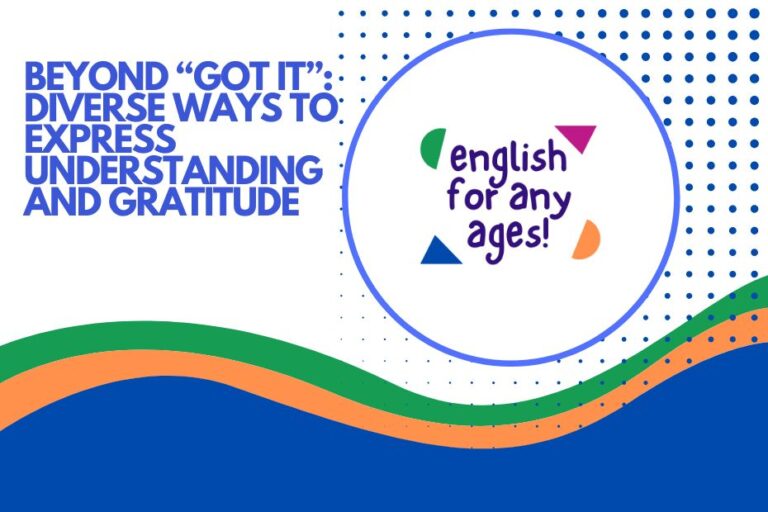Mastering “With”: Sentence Examples and Usage Guide
The preposition “with” is a fundamental building block in English grammar, serving a multitude of functions that enrich sentence structure and meaning. Understanding how to use “with” correctly is crucial for clear and effective communication.
This comprehensive guide delves into the various uses of “with,” providing detailed explanations, numerous examples, and practical exercises to help you master its application. Whether you’re a beginner or an advanced learner, this article will enhance your understanding and confidence in using “with” accurately and fluently.
This article is designed to be helpful for English language learners of all levels, from beginners who are just starting to grasp the basics of prepositions to advanced learners looking to refine their understanding and usage of “with” in more complex contexts. Native English speakers looking to brush up on their grammar skills may also find this guide useful.
Table of Contents
- Introduction
- Definition of “With”
- Structural Breakdown of Sentences with “With”
- Types of Usage
- Examples of “With” in Sentences
- Usage Rules for “With”
- Common Mistakes with “With”
- Practice Exercises
- Advanced Topics
- Frequently Asked Questions
- Conclusion
Definition of “With”
“With” is a preposition in English that indicates a relationship between elements in a sentence. It connects a noun or pronoun (its object) to another part of the sentence, showing various types of associations.
These associations can include accompaniment, possession, instrumentality, agreement, manner, cause, and contrast.
Classification: Preposition.
Function: “With” functions to establish a connection or relationship between different parts of a sentence. It specifies how one element relates to another, adding detail and context to the overall meaning.
Contexts: “With” is used in a wide variety of contexts, from everyday conversation to formal writing. Its versatility makes it an essential part of English vocabulary. The specific meaning of “with” can vary depending on the context in which it is used.
Structural Breakdown of Sentences with “With”
The basic structure of a sentence using “with” involves the preposition itself, followed by its object (a noun, pronoun, or noun phrase). This prepositional phrase then modifies or adds detail to another part of the sentence, often the subject or verb.
Basic Structure: Subject + Verb + (Object) + with + Object of the Preposition
Here’s a breakdown:
- Subject: The person or thing performing the action.
- Verb: The action being performed.
- Object (Optional): The person or thing receiving the action.
- with: The preposition connecting the object of the preposition to another part of the sentence.
- Object of the Preposition: The noun, pronoun, or noun phrase that follows “with” and is governed by it.
Example: She (Subject) went (Verb) to the store (Prepositional Phrase) with her friend (Object of the Preposition).
The prepositional phrase “with her friend” modifies the verb “went,” indicating who she went with.
Types of Usage
“With” has several distinct uses, each conveying a different type of relationship. Understanding these different uses is key to using “with” correctly and effectively.
Expressing Accompaniment
This is one of the most common uses of “with.” It indicates that someone or something is accompanying another person or thing. It shows who or what is together with the subject of the sentence.
Example: He went to the party with his brother.
Indicating Possession or Attributes
“With” can also indicate possession or describe an attribute or characteristic of someone or something. In this case, it often functions similarly to an adjective.
Example: The girl with the red hair is my sister.
Showing Instrumentality
This usage shows the tool, instrument, or means by which something is done. It explains how an action was performed.
Example: She opened the door with a key.
Denoting Agreement or Support
“With” can express agreement, support, or alignment with a particular idea, person, or group.
Example: I am with you on this issue.
Expressing Manner
In some cases, “with” describes the manner in which something is done, similar to an adverb.
Example: She sang the song with great enthusiasm.
Indicating Cause or Reason
“With” can indicate the cause or reason for something, although this is less common than other prepositions like “because of” or “due to.”
Example: The tree was shaking with the strong wind.
Showing Contrast
Less commonly, “with” can be used to show contrast or opposition, often in set phrases.
Example: He argued with her about the budget.
Fixed Expressions with “With”
English contains many fixed expressions that use “with.” These idioms often have meanings that are not immediately obvious from the individual words.
Example: I’m fed up with this situation.
Examples of “With” in Sentences
To solidify your understanding, let’s examine a series of example sentences, categorized by the different uses of “with.” These examples will illustrate how “with” functions in various contexts.
Accompaniment Examples
The following table provides a comprehensive list of sentences illustrating the use of “with” to express accompaniment. Each sentence demonstrates how “with” connects a person or thing to another, indicating their presence together.
| # | Sentence |
|---|---|
| 1 | She went to the movies with her friends. |
| 2 | He walked his dog with a new leash. |
| 3 | We had dinner with our family last night. |
| 4 | The children played in the park with their toys. |
| 5 | I traveled to Europe with my backpack. |
| 6 | The singer performed on stage with his band. |
| 7 | She studied in the library with her classmates. |
| 8 | He went fishing with his father. |
| 9 | They celebrated their anniversary with a romantic dinner. |
| 10 | The artist painted the mural with her assistants. |
| 11 | I like to drink coffee with milk. |
| 12 | She always carries her umbrella with her. |
| 13 | He enjoys reading books with a cup of tea. |
| 14 | We decorated the house with festive lights. |
| 15 | The chef prepared the meal with fresh ingredients. |
| 16 | The student completed the assignment with great care. |
| 17 | The team worked together with a shared goal. |
| 18 | She dances with grace and elegance. |
| 19 | He approached the situation with caution. |
| 20 | They faced the challenge with determination. |
| 21 | The company launched the new product with a marketing campaign. |
| 22 | The community came together with a common purpose. |
| 23 | The author published the novel with a well-known publishing house. |
| 24 | The scientist conducted the experiment with advanced equipment. |
| 25 | The traveler explored the city with a detailed map. |
Possession Examples
The table below showcases sentences where “with” is used to indicate possession or attribute. These examples demonstrate how “with” can describe a characteristic or quality that a person or thing possesses.
| # | Sentence |
|---|---|
| 1 | The man with the beard is my neighbor. |
| 2 | The house with the blue door is for sale. |
| 3 | The girl with the long hair is a talented singer. |
| 4 | The car with the damaged fender needs repair. |
| 5 | A country with rich natural resources can prosper. |
| 6 | The cake with the chocolate frosting looks delicious. |
| 7 | The student with the highest grades received an award. |
| 8 | A person with a positive attitude is more likely to succeed. |
| 9 | The company with the best customer service is highly regarded. |
| 10 | The movie with the happy ending left the audience satisfied. |
| 11 | She is a woman with great intelligence. |
| 12 | He is a man with a kind heart. |
| 13 | The project with the potential for success received funding. |
| 14 | The book with the intriguing title became a bestseller. |
| 15 | The city with the vibrant culture attracts many tourists. |
| 16 | A team with diverse skills can achieve great things. |
| 17 | The problem with the complicated solution was dismissed. |
| 18 | The child with the contagious laugh was loved by everyone. |
| 19 | The plant with the beautiful flowers grew quickly. |
| 20 | The animal with the unique markings was very rare. |
| 21 | The restaurant with the excellent reviews was fully booked. |
| 22 | The athlete with the record-breaking performance was honored. |
| 23 | The organization with the charitable mission received donations. |
| 24 | The website with the user-friendly interface attracted visitors. |
| 25 | The technology with the innovative features transformed the industry. |
Showing Instrumentality Examples
The subsequent table illustrates the use of “with” to show instrumentality. These sentences demonstrate how “with” specifies the tool, instrument, or means by which an action is performed.
| # | Sentence |
|---|---|
| 1 | She cut the paper with scissors. |
| 2 | He opened the bottle with a bottle opener. |
| 3 | They built the house with bricks and mortar. |
| 4 | The artist painted the picture with oil paints. |
| 5 | The chef prepared the dish with exotic spices. |
| 6 | The carpenter built the table with a hammer and nails. |
| 7 | The surgeon performed the operation with precision instruments. |
| 8 | The writer composed the novel with a pen and paper. |
| 9 | The musician played the song with a guitar. |
| 10 | The programmer developed the software with computer code. |
| 11 | The detective investigated the crime with forensic tools. |
| 12 | The gardener cultivated the plants with gardening tools. |
| 13 | The mechanic repaired the car with specialized equipment. |
| 14 | The scientist conducted the experiment with advanced technology. |
| 15 | The explorer navigated the wilderness with a compass and map. |
| 16 | She unlocked the door with the key. |
| 17 | He stirred the soup with a spoon. |
| 18 | The thief broke into the house with a crowbar. |
| 19 | She sewed the dress with a needle and thread. |
| 20 | He cleared the snow with a shovel. |
| 21 | The architect designed the building with computer software. |
| 22 | The teacher taught the lesson with interactive exercises. |
| 23 | The athlete trained for the marathon with a rigorous workout plan. |
| 24 | The journalist reported the news with factual information. |
| 25 | The chef baked the bread with a traditional oven. |
Agreement Examples
This table provides examples of sentences where “with” denotes agreement or support. These examples illustrate how “with” can express alignment or solidarity with an idea, person, or group.
| # | Sentence |
|---|---|
| 1 | I am with you on this decision. |
| 2 | She stood with her colleagues in solidarity. |
| 3 | He voted with the majority. |
| 4 | We are with the protesters in their fight for justice. |
| 5 | The company is with its employees during this difficult time. |
| 6 | I side with the plaintiff in this case. |
| 7 | The community is with the victims of the disaster. |
| 8 | The organization is with its members in their pursuit of excellence. |
| 9 | The country is with its allies in maintaining peace. |
| 10 | The team is with its coach in striving for victory. |
| 11 | I’m completely with your plan. |
| 12 | They are with the movement for social change. |
| 13 | He aligned himself with the new policy. |
| 14 | We are with the initiative to improve education. |
| 15 | The government is with the people in addressing their concerns. |
| 16 | I stand with her in her time of need. |
| 17 | The union is with its workers in negotiating for better wages. |
| 18 | The charity is with the underprivileged in providing support. |
| 19 | The research team is with the scientists in discovering new knowledge. |
| 20 | The art community is with the artists in promoting creativity. |
| 21 | The medical team is with the patients in providing care. |
| 22 | The legal team is with the clients in seeking justice. |
| 23 | The academic community is with the students in pursuing education. |
| 24 | The business community is with the entrepreneurs in fostering innovation. |
| 25 | The environmental group is with the activists in protecting the planet. |
Manner Examples
The following table provides examples of sentences where “with” is used to express manner. These examples illustrate how “with” can describe the way in which something is done.
| # | Sentence |
|---|---|
| 1 | She approached the problem with caution. |
| 2 | He completed the task with diligence. |
| 3 | They celebrated their victory with enthusiasm. |
| 4 | The artist painted the portrait with great skill. |
| 5 | The chef prepared the meal with precision. |
| 6 | She danced with grace. |
| 7 | He spoke with confidence. |
| 8 | They listened with interest. |
| 9 | The musician played the song with passion. |
| 10 | The writer described the scene with vivid detail. |
| 11 | She handled the situation with care. |
| 12 | He approached the negotiation with tact. |
| 13 | They responded to the criticism with maturity. |
| 14 | The athlete trained with dedication. |
| 15 | The teacher taught the lesson with enthusiasm. |
| 16 | The student studied for the exam with focus. |
| 17 | The team worked together with collaboration. |
| 18 | The speaker delivered the speech with conviction. |
| 19 | The actor performed the role with authenticity. |
| 20 | The scientist conducted the experiment with rigor. |
| 21 | The detective investigated the crime with thoroughness. |
| 22 | The journalist reported the news with objectivity. |
| 23 | The chef cooked the dish with creativity. |
| 24 | The artist designed the sculpture with vision. |
| 25 | The programmer developed the software with innovation. |
Cause Examples
This table includes sentences that use “with” to indicate cause or reason. Note that this usage is less common and often replaceable with other prepositions like “because of.”
| # | Sentence |
|---|---|
| 1 | She trembled with fear. |
| 2 | He was shaking with anger. |
| 3 | The tree swayed with the wind. |
| 4 | The crowd cheered with excitement. |
| 5 | The child cried with hunger. |
| 6 | His face flushed with embarrassment. |
| 7 | Her eyes sparkled with joy. |
| 8 | The building vibrated with the explosion. |
| 9 | The audience roared with laughter. |
| 10 | The city was bustling with activity. |
| 11 | The garden bloomed with color. |
| 12 | The forest resonated with life. |
| 13 | The classroom buzzed with energy. |
| 14 | The market teemed with vendors. |
| 15 | The river flowed with force. |
| 16 | She was pale with sickness. |
| 17 | He was red with exertion. |
| 18 | The room was filled with smoke. |
| 19 | The air was thick with humidity. |
| 20 | The night was alive with stars. |
| 21 | The project flourished with support. |
| 22 | The company prospered with innovation. |
| 23 | The community thrived with collaboration. |
| 24 | The relationship deepened with communication. |
| 25 | The economy grew with investment. |
Usage Rules for “With”
While “with” is a versatile preposition, there are specific rules to follow to ensure correct usage. These rules cover various aspects, including word order, context, and common exceptions.
Word Order: “With” is typically followed by its object (a noun, pronoun, or noun phrase). The prepositional phrase “with + object” usually modifies a verb, noun, or adjective in the sentence.
Correct: She went to the park with her dog.
Incorrect: She went with to the park her dog.
Contextual Clarity: Ensure that the use of “with” is clear and unambiguous. The relationship between the object of “with” and the rest of the sentence should be easily understood.
Correct: I fixed the computer with a screwdriver.
Unclear: I fixed the computer with the problem. (Better: I fixed the computer because of the problem.)
Formal vs. Informal: In formal writing, avoid ending a sentence with “with.” While common in spoken English, it can sound awkward in written form.
Informal: Who did you go with?
Formal: With whom did you go?
Redundancy: Avoid using “with” redundantly. Sometimes, a simpler sentence structure is more effective.
Redundant: The book with the cover that is red is mine.
Better: The book with the red cover is mine.
Exceptions: Some fixed expressions and idioms require specific uses of “with,” even if they don’t strictly adhere to the general rules. Learn these expressions as individual units.
Example: I’m fed up with this situation. (The phrase “fed up with” is a fixed expression.)
Common Mistakes with “With”
Even experienced English speakers can make mistakes with “with.” Understanding these common errors can help you avoid them in your own writing and speech.
Incorrect Preposition: Using “with” when another preposition is more appropriate.
Incorrect: I agree to you with that. (Should be: I agree with you on that.)
Correct: I agree with you on that.
Redundant Use: Using “with” when it’s unnecessary.
Incorrect: She helped me with carrying the bags. (Should be: She helped me carry the bags.)
Correct: She helped me carry the bags.
Ending Sentences with “With”: While acceptable in informal contexts, avoid ending sentences with “with” in formal writing.
Informal: Who are you going with?
Formal: With whom are you going?
Misunderstanding Idioms: Incorrectly using or interpreting fixed expressions that include “with.”
Incorrect: I’m fed up of this. (Should be: I’m fed up with this.)
Correct: I’m fed up with this.
Omitting “With”: Forgetting to include “with” when it is necessary to express a relationship between elements in a sentence.
Incorrect: I went the store my friend. (Should be: I went to the store with my friend.)
Correct: I went to the store with my friend.
Practice Exercises
Test your understanding of “with” with these practice exercises. Each exercise focuses on a different aspect of using “with” correctly.
Exercise 1: Fill in the Blanks
Fill in the blanks with the correct use of “with.”
| # | Question | Answer |
|---|---|---|
| 1 | She went to the party _______ her sister. | with |
| 2 | He opened the door _______ a key. | with |
| 3 | I agree _______ you on this issue. | with |
| 4 | She sang the song _______ great passion. | with |
| 5 | The tree was swaying _______ the wind. | with |
| 6 | The man _______ the hat is my father. | with |
| 7 | I am fed up _______ these problems. | with |
| 8 | She completed the project _______ success. | with |
| 9 | He fixed the computer _______ a screwdriver. | with |
| 10 | They celebrated their anniversary _______ a dinner. | with |
Exercise 2: Correct the Errors
Identify and correct the errors in the following sentences.
| # | Question | Answer |
|---|---|---|
| 1 | I agree to you with that. | I agree with you on that. |
| 2 | She helped me with carry the bags. | She helped me carry the bags. |
| 3 | Who are you going with? | With whom are you going? (Formal) |
| 4 | I’m fed up of this. | I’m fed up with this. |
| 5 | I went the store my friend. | I went to the store with my friend. |
| 6 | The book with the cover that is blue is mine. | The book with the blue cover is mine. |
| 7 | He ate the soup with a fork. | He ate the soup with a spoon. |
| 8 | She painted the picture with using oil paints. | She painted the picture with oil paints. |
| 9 | They are agreement with the proposal. | They are in agreement with the proposal. |
| 10 | I am concerning with the issue. | I am concerned with the issue. |
Exercise 3: Sentence Construction
Create sentences using “with” based on the given prompts.
| # | Prompt | Example Answer |
|---|---|---|
| 1 | Express accompaniment: a child and a dog | The child walked in the park with his dog. |
| 2 | Indicate possession: a woman and green |

